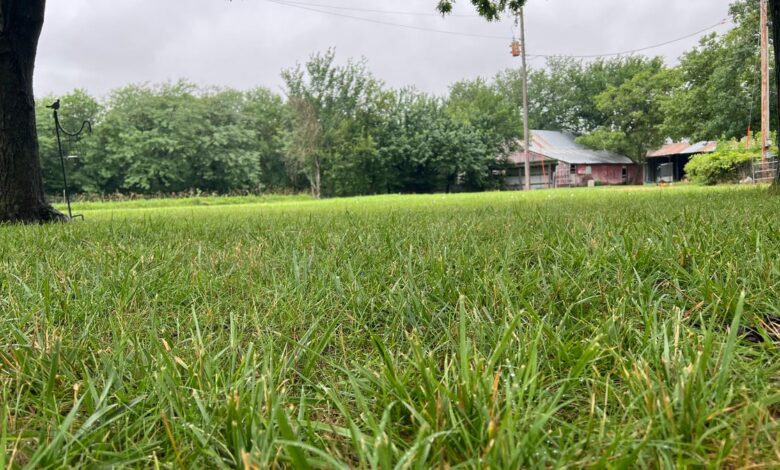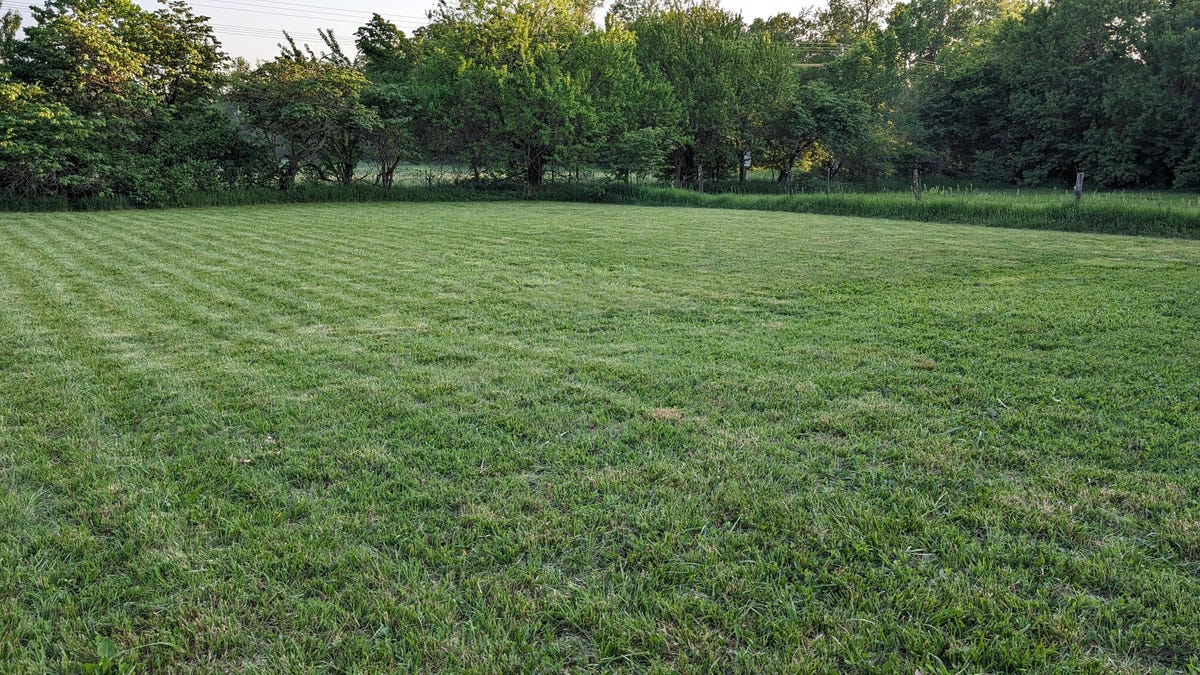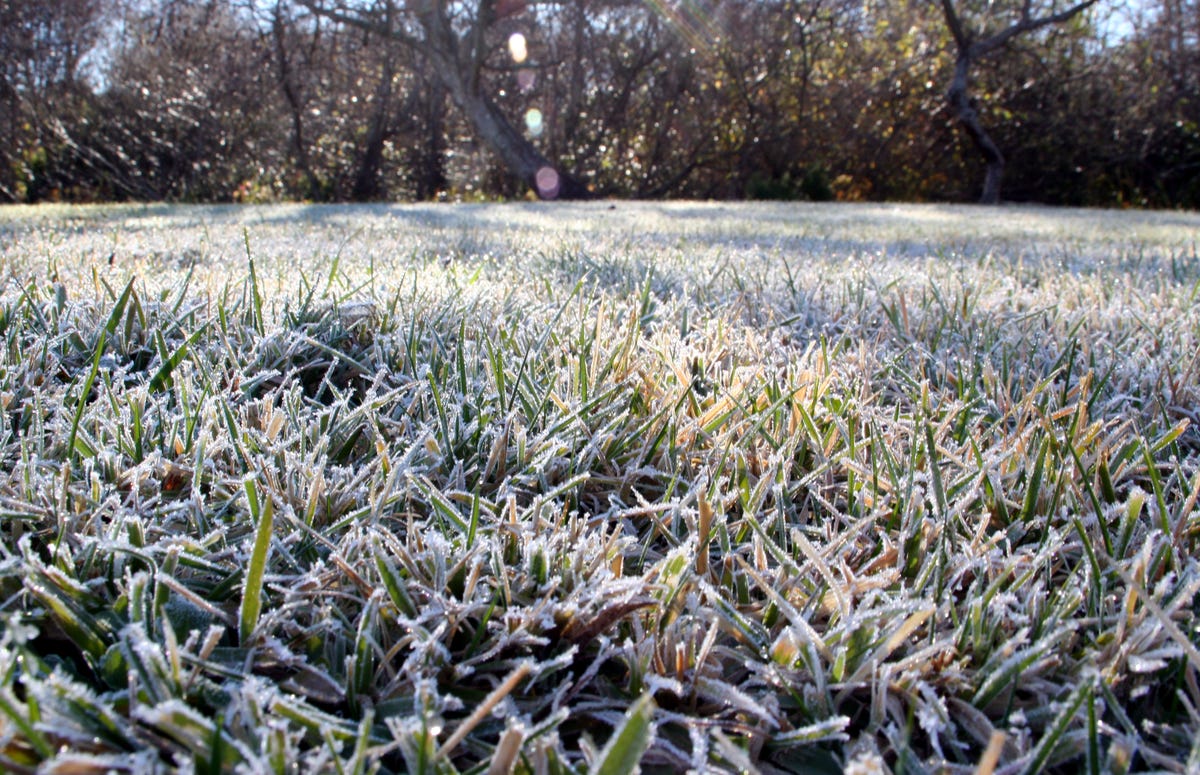Scorching summer heat can damage your lawn, but it doesn’t have to





A healthy lawn that has been well-maintained and treated throughout the year will flourish and look lush and green when the spring rains arrive. This may mean more mowing — make sure you’re mowing correctly, and it can be quite a time investment. One way to ensure a consistent cut is with a robotic lawn mower. While these can be great pieces of equipment, there are a few things to consider before purchasing a robotic lawn mower. But if you find that it’s a good fit for your lawn, a robotic lawn mower can save you hours of mowing time.
There are a number of things that can make it difficult to keep your lawn healthy. In addition to heat waves and record-breaking temperatures, other factors like nutrient depletion, insects, and more can make it difficult to keep your lawn healthy and prevent it from drying out. But don’t worry, there are some effective ways to maintain your lawn every season — even during the hot summer months — and your lawn care doesn’t have to be tedious or expensive.
This guide covers everything you need to know to keep your lawn lush all year long, no matter the season. Let’s start with the basics. (For more lawn care tips, read how much you can save by switching to an electric lawn mower And how to get your old lawn mower back in shape.)
Sunlight
We often forget that grass is a plant. So, just like other plants, the grass in your lawn needs sunlight, water, and food to stay healthy. To give your garden the best chance of surviving in the area where you live, choose the right type of grass. Just like other plants, there are different types of grass and each has different requirements. Some turf grasses can do well with just four hours of direct sunlight per daywhile others may need up to six hours.
Depending on how your yard is landscaped and how many trees, shrubs, bushes, and other shade plants you have around your home, you may need to use different types of grasses around your lawn. While some grasses like a little shade, others need full sun, meaning they need eight hours of sunlight a day to grow well.
If you don’t know what type of grass you have or need, a landscaper can help you find the best type for your yard.
Use a homemade sprinkler system to water your lawn.
Water

Next to sunshine, water is the most important ingredient to get and keep a healthy lawn. In general, most grass needs 1 to 1.5 inches of water per week. A smart, automated sprinkler system can be a valuable investment, but you can also install an effective sprinkler system for less than $100.
A form of “smart” lawn irrigation system allows you to set your lawn’s watering needs. It offers features such as automatically pushing back watering schedules a few days after a rain, tracking the amount of water used on your lawn, and only running the at the right time of daywhile ensuring your lawn is evenly watered.
With a smart watering system, whether it’s a professionally installed in-ground system or a timer on a hose sprinkler, you can better control when the sprinklers run and how much water is used. Because some areas of the country are experiencing water shortages, be aware of local restrictions before watering your lawn.
Fertilizer

My garden has never looked so professional.
Spring is the best time to start fertilizing your lawn. As a rule of thumb, when your grass looks ready for the first cut of the season, it is ready for fertilization. After your first application, you should fertilize once every six to eight weeks until October if you use a slow release fertilizer.
Your Seasonal Guide to Lawn Care

Summer
As tempting as it may be to mow your lawn short, once summer arrives and it’s warm outside, it’s best to keep your grass 4 inches or taller — after it’s been mowed. This allows the grass roots to grow stronger. You’ll also want to continue to apply fertilizer every six to eight weeks.
Summer is also the time when you need to be proactive weed controlUse a targeted post-emergent pesticide to prevent weeds from germinating and protect your grass at the same time. You should also have a product for larvae control at hand to prevent the spread of insect pests such as Japanese beetles.
Don’t forget water during these hot summer months. You and your lawn need water. Make sure you water once or twice a week. Hot weather is increasing water loss by evaporationalso. Try to water in the early morning hours when temperatures are relatively cool.
Fall
Continue to water, fertilize, and mow on schedule as needed. It is vital to maintain the same schedule each year to keep your lawn healthy, as fertilizing or aerating too late in the season can limit nutrient uptake.
At this moment you should to sow if you see bare spots in your lawn from foot traffic, pets or other causes. Early fall is a critical time to do this because the ground is still warm and moist.
You also want to prepare your grass for the colder months ahead. As the first frost approaches, continue to reduce the blade height with each cut. Your final mowing of the season should leave your grass between the 2 and 2.5 incheswhich can prevent snow mold.
Winter

It is best to leave the grass longer to protect it from the colder weather.
If you live in a cooler climate, maintenance will be much less demanding during the cold winter months. However, you should still be vigilant. For example, prevent unnecessary damage to your lawn by eliminating foot traffic over it.
And if you need to defrost your walkways, opt for a product with calcium chloride. This will prevent your grass from being damaged by salt. Once the temperature rises above freezing, you should rinse your lawn thoroughly to wash away excess salt.
Additionally, if you have to shovel snow from your driveway or sidewalk, avoid placing piles on your lawn. All that extra weight can lead to soil compaction, creating bare spots in your yard. In the meantime, if you live in a warmer climate, keep mowing your lawn. You’ll also want to leave the blades on longer to protect them from the colder weather.
Ultimately, these tips can help your garden look great no matter the season. Remember to inspect your garden regularly to assess its health. Spotting and addressing signs of problems early will help prevent further problems in the future.
Spring
Spring is the perfect time to prepare for a great lawn season. Start by inspecting your yard for any debris or weeds and remove them immediately. If you see any bare spots, to sow fertilize the area with grass seed and apply nitrogen fertilizer five weeks after application.
Next you have to Adjust your lawn mower for the season. Sharpen the blades, replace the filter and spark plugs, and change the oil if necessary. When buying a lawn mower, choose one that works well for the size of the gardenIf you have a yard larger than a quarter acre, a riding mower will make the job a lot easier, as it will likely have a wider cutting width.
When you do your first mowing of the season, set your mower to the highest cutting setting. This will trim as little as possible, a maximum of one-third of each blade of grass. With a longer blade length, grass absorbs more sunlight. This in turn promotes root growth. Spring is also a great time to Aerate your gardenAerating your lawn allows the fertilizer to penetrate deep into the roots of your grass.
There are many ways to keep your lawn healthy all year round. After all, a healthy lawn increases the attractiveness of your home and helps to control the population of insects and rodents. It can also help Save money on your energy bill Through reduction of solar heat gain.




